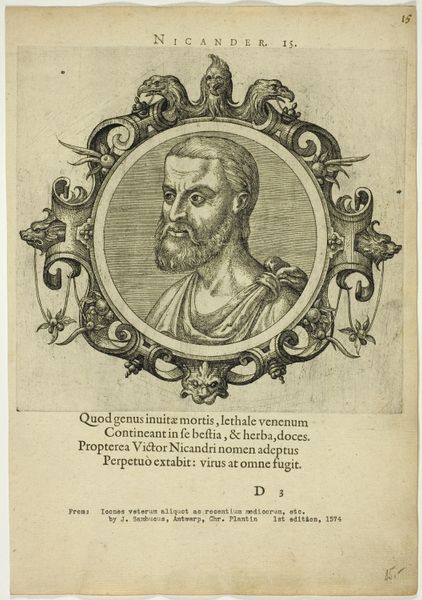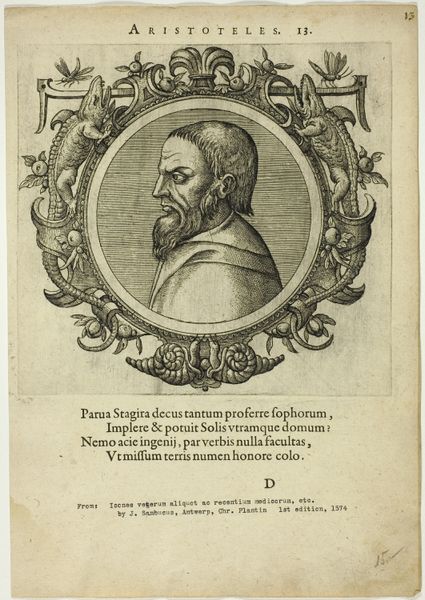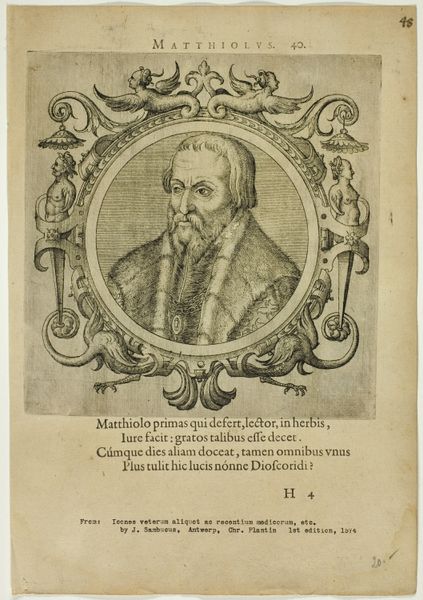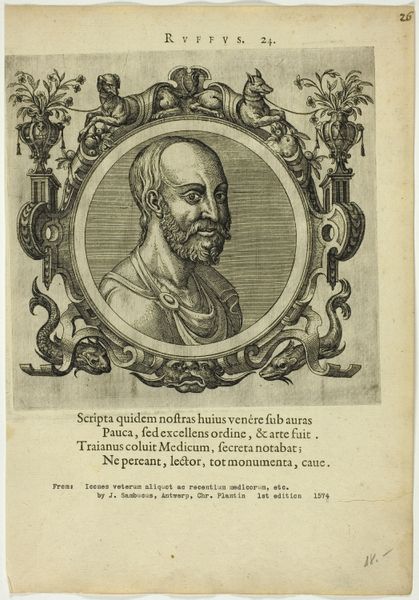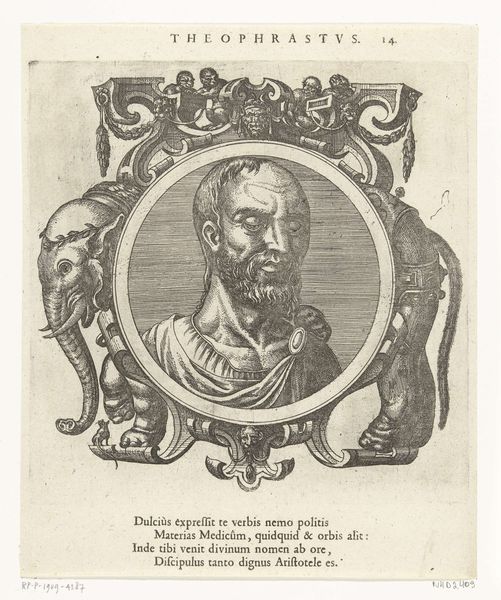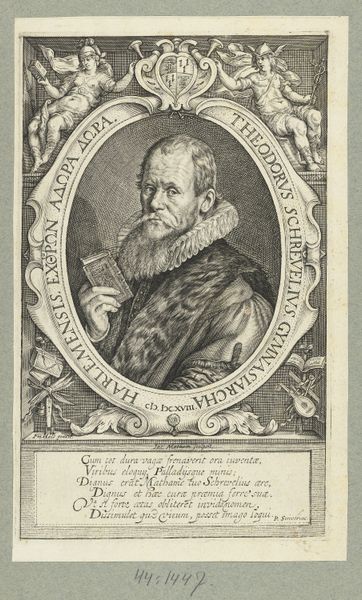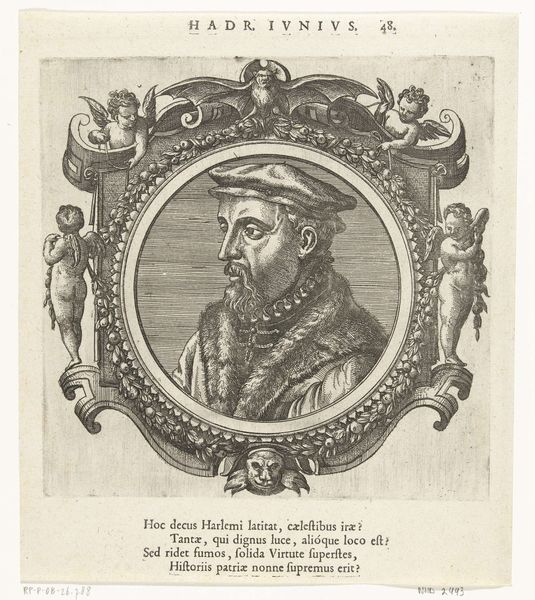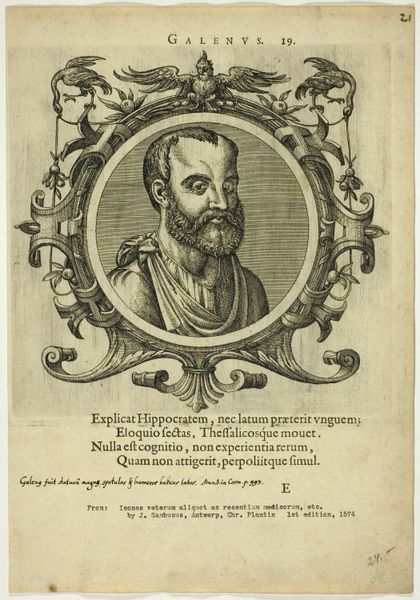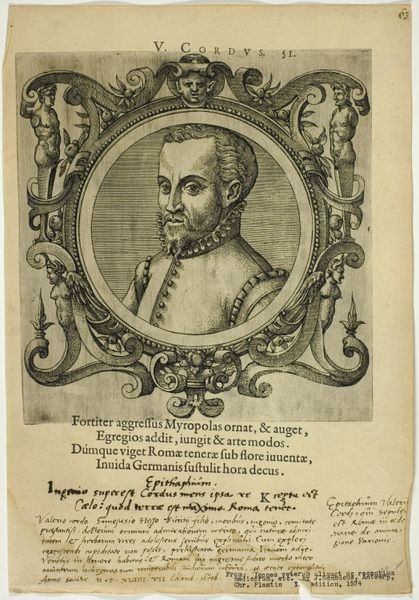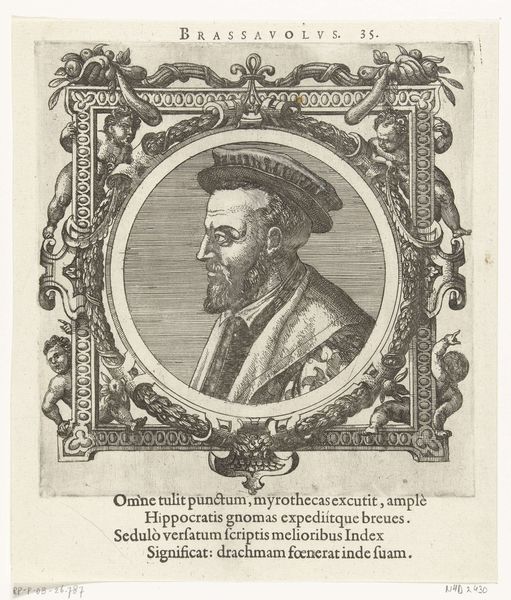
drawing, print, etching, paper
#
portrait
#
drawing
# print
#
etching
#
paper
#
11_renaissance
Dimensions: 197 × 194 mm (image/plate); 311 × 216 mm (sheet)
Copyright: Public Domain
Curator: Look closely at this etching. This is a portrait of Guillaume Rondelet, or Rondeletius as he was known, likely printed in 1574. The artist was Johannes Sambucus. It's an early print on paper now held in the Art Institute of Chicago. Editor: My initial impression is of a kind of serious intellectual playfulness. The central portrait, encased within an oval frame, feels very stately, but then your eye is drawn to this almost whimsical bestiary worked into the border, like visual footnotes. Curator: Indeed, the symbolic elements surrounding Rondeletius speak volumes. Consider the text beneath the portrait – a testament to Rondeletius's medical prowess. Sambucus designed this print as a frontispiece of sorts for Rondeletius's later publications. This print circulated amongst intellectual and medical communities, solidifying Rondeletius' reputation in this period of emergent sciences. Editor: It’s interesting how Rondeletius is portrayed as almost timeless, yet surrounded by images loaded with meaning specific to his time. Note, for instance, the recurring images of fish – Rondeletius’s expertise lay particularly in marine life, foreshadowing later ichthyology. Curator: Exactly! These images serve not merely as decoration but underscore Rondeletius' pioneering contributions to natural history, but it's equally crucial to acknowledge the inherent power dynamics. Publications such as this portrait elevated the subject, granting him lasting recognition. Such images created social capital within intellectual circles. Editor: Agreed, the portrait presents him not just as a scientist but as an authority. He’s meant to be seen as knowledgeable, trustworthy...someone almost mythic. This use of visual symbols and even animals gives him authority and respectability, as seen across centuries and cultures. Curator: Furthermore, the inclusion of a publication date – 1574 – speaks volumes about how knowledge was circulated and consumed. Prints such as this allowed for standardized likenesses and textual references to spread across geographical boundaries, an increasingly vital aspect to consolidating power at the time. Editor: Reflecting on this piece, it's more than just a portrait; it’s an encapsulation of an era's understanding of knowledge and authority through symbolic imagery. Curator: Precisely, this etching illustrates the intersection between art, science, and social currency during the Renaissance. It captures the complex power relations inherent in representation.
Comments
No comments
Be the first to comment and join the conversation on the ultimate creative platform.


